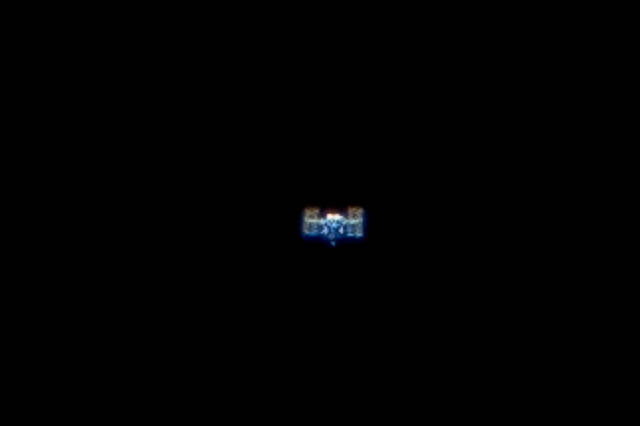I got up early on the morning of the 2nd December, before 4 am, in order to photograph the ISS as it passed over Sydney. I had used the ISS app on my phone to see where the Space Station was likely to be in a good position for photography (you can also use websites like this NASA one)Its orbit oscillates and every few months it can be in a suitable spot either as an early evening object or a just before dawn. It needs to be those times in order to be seen at night, and still illuminated by the Sun.

Often the ISS passes over a fair way from your location, and at a low angle – eg 20° above the horizon at its maximum angle, and therefore not that bright. This morning was forecast to be a maximum angle of 84° and a brightness of magnitude -3.6 (the brightest star, Sirius, has a maximum brightness of -1.6, and Venus has a maximum brightness of -4.4, so the ISS should be quite bright). Also, at an angle of 90°, the ISS would be straight overhead at its closest approach. Its height above Earth varies from 330 km and 435 km.

This was my second serious attempt to photograph the ISS. My first one you can see here.
For the photos I used a 100-400 mm lens with a 1.4x teleconverter, giving a focal length of 560 mm. Focus was manual (I used the crescent Moon to focus on). The ISS passes over very quickly, so a fast shutter speed is essential. My settings were 1/1000 sec, f8, 1600 ISO. The resulting photos were then heavily cropped.

1/60 sec, f8, 1600 ISO
As the ISS passed over its orientation relative to my location changed, and this is clearly shown in the photos.



